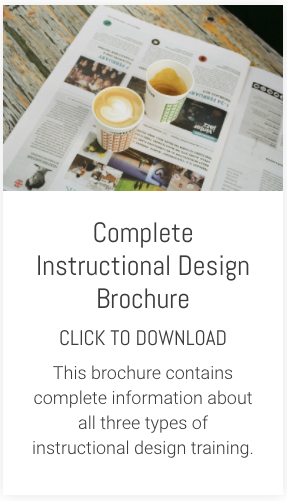Few ideas in Learning & Development have been as popular (or as persistent) as learning styles. Most of us are familiar with the basic idea: people have different styles of learning (‘visual’ or ‘auditory’ are couple of examples). Identify someone’s style, match the training to it, and ‘hey presto’ learning will be more effective.
You can understand the attraction. It’s an idea that seems deeply intuitive. That feels totally learner-centred. That is, in fact, irresistible to many learners and L&D professionals.
Which goes a long way to explaining why, for years, learning styles have been taught, assessed, and embedded into L&D practice. But there’s a big problem with this idea. Because when you look closely at the evidence, the idea simply doesn’t hold up.
Let’s be precise about what’s being challenged
The specific claim that research has examined and failed to support, is what psychologists call the meshing hypothesis. The idea that learners learn better when instruction is matched to their preferred learning style (e.g., visual learners taught visually, auditory learners taught verbally).
Now it’s important to note, that this is different from saying:
- people don’t have preferences (they do),
- or that variety is bad (it isn’t),
- or that accessibility doesn’t matter (it absolutely does).
But back to that central question: does matching instruction to a learner’s declared style improve learning outcomes?
Fans of the learning styles idea are going to be disappointed. Because after more than two decades of research, the answer is still: no compelling evidence.
What the research actually says
One of the most widely cited reviews was published by Harold Pashler and colleagues in 2008. They set out very clearly what evidence would be required to support learning styles — and then examined the available studies.
Their conclusion was blunt: there was no credible evidence showing that matching instruction to learning styles improves learning.
Other reviews have reached the same conclusion. A very major UK review by Coffield et al. examined dozens of learning style models and found serious issues with reliability, validity, and practical usefulness.
As a result, learning styles are now commonly described in the research literature as a “neuromyth” — a belief about the brain or learning that sounds scientific but isn’t supported by robust evidence.
So much so that for years there has even been an open “Learning Styles Challenge”, offering a cash prize to anyone who can demonstrate real-world benefits from designing instruction around learning styles. To date, the prize remains unclaimed.
Why the idea refuses to die
If the evidence is so weak, why does the idea persist? Partly because learning styles play into something everyone is a fan of: personalisation. They give learners language to describe themselves and give designers a sense that they are tailoring learning rather than mass-producing it.
They’re also easy to explain, easy to assess, and easy to sell. But ease and intuitiveness are not the same thing as effectiveness.
What actually works better
Ironically, many people who believe in learning styles are already doing things that do work.
Research consistently shows that learning is more effective when:
- the mode of instruction matches the nature of the content (for example, diagrams for spatial information or audio for pronunciation),
- learners get practice, not just content exposure,
- retrieval and feedback are built into practice
- complexity is managed carefully,
- learners are supported in applying learning in context.
In other words, the question isn’t, “What type of learner are you?” It’s, “What kind of learning does this task require?” That shift — from labelling learners to analysing tasks — is what helps L&D become more effective.
Preferences still matter, BUt...
None of this means learner preferences should be ignored. Preferences matter for all sorts of reasons like:
- motivation
- engagement,
- inclusion and accessibility.
But preference is not the same as learning effectiveness. Giving learners choice in how they engage with content can be valuable. Designing everything around a fixed learning style is not.
A more helpful way to think about it?
If we really want to personalise learning, there are better levers to pull than learning styles:
- design for the task, not the learning style label
- design for application and performance, not just exposure to or consumption of content
- design for context, not abstraction
Learning styles promised personalisation. The evidence suggests we can do better — by focusing less on categories and labels and more on what people actually need to do more effectively in the workplace.









